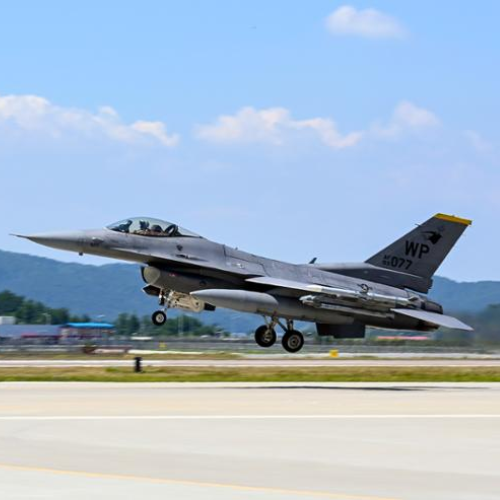The U.S. Air Force is making a bold change in South Korea. It has decided to form a second large group of fighter jets, known as a “super squadron,” at Osan Air Base. This new unit will include 31 F-16 fighter jets and around 1,000 military personnel. These jets and airmen will move from Kunsan Air Base to Osan over the summer.
This move is not permanent. It is part of a special test to see if combining more jets and people into one big team can improve the way the Air Force works in the region. The Air Force believes this bigger setup could help it get ready for any problems faster and work more efficiently.
The idea of the super squadron started last year. In July, the Air Force created the first one by moving nine F-16 jets from Kunsan to Osan. That made one large group with a total of 31 jets. This test group has been in place since October and has now completed several months of work. Based on the results so far, the Air Force has decided to expand the experiment by creating a second squadron with the same setup.
What’s Happening at Osan and Kunsan
Once the second squadron is up and running, Osan Air Base will have 62 F-16 fighter jets in total. That’s double the number of jets it had before the super squadron idea began. Osan will now become the main home for these high-speed, high-tech jets in South Korea.
Vietnam’s Boldest Break: F-16 Deal Marks Dramatic Split from Russia’s Fading Grip
Meanwhile, Kunsan Air Base, which is located further south, will lose many of its F-16s. After the move, there will be few or possibly no F-16 left at Kunsan. However, this doesn’t mean Kunsan will be forgotten. The Air Force says Kunsan will still be used for training and for rotating troops and aircraft in and out of the country.
This relocation is meant to make everything run smoother. By putting more planes and teams in one place, the Air Force hopes to be quicker and stronger in any emergency. But it is still just a test. The Air Force is checking to see if this method actually works better than the old way.
A Closer Look at the Super Squadron Plan
The goal of the super squadron project is to find out if having larger groups of planes and personnel in one place helps the Air Force be more ready and powerful. By combining people and machines in this way, the Air Force believes it may save time, increase teamwork, and respond faster when needed.
The first part of the test, which began last October, has shown some promising results. The Air Force says the bigger group has performed better in some areas. It has seen improvements in how quickly teams can prepare for missions and in how well the jets are maintained and operated.
Power Play Turns Toxic: U.S. Deploys F-16 Jets to Taiwan and Philippines, China Issues Stark Warning
But it’s not all easy. The Air Force also said there have been some challenges with this new setup. While bigger teams can be stronger, they also need more planning, space, and coordination. These issues are being carefully looked at as the project continues.
Now, with the approval from the highest Air Force leaders, the second phase of the test is beginning. More jets and more people are being added to see if these improvements can grow even further — and if the bumps along the way can be fixed.
The super squadron idea could change how the Air Force works in Korea, but for now, it is still just a trial. The next few months will help show if this big change brings more power or more problems.

